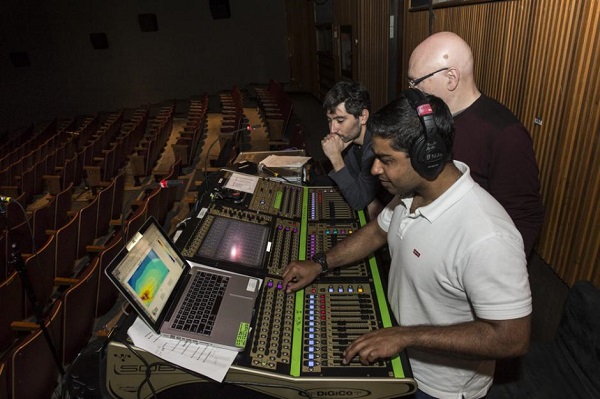5 Audio Tech Tips

Introduction to Audio Technology

In the world of music and sound, audio technology plays a crucial role in enhancing and perfecting the listening experience. With the rapid advancement of technology, it’s essential to stay updated on the latest trends and techniques to produce high-quality audio. This blog post will delve into the realm of audio tech, providing valuable insights and tips for both beginners and professionals.
Understanding Audio Signals

To work with audio technology, it’s vital to understand the basics of audio signals. Audio signals are electrical representations of sound waves, which can be analog or digital. Analog signals are continuous, while digital signals are discrete and represented by a series of numbers. Understanding the difference between these two types of signals is crucial for working with audio equipment and software.
Recording and Editing Audio

Recording and editing audio are essential steps in the music production process. Here are some tips to keep in mind: * Use high-quality microphones to capture clear and crisp audio. * Invest in a good pair of monitor speakers to accurately listen to your recordings. * Learn to use audio editing software, such as Pro Tools or Ableton Live, to edit and manipulate your recordings. * Experiment with different effects and plugins to enhance your sound.
Audio Mixing and Mastering

Once you’ve recorded and edited your audio, it’s time to mix and master your tracks. Mixing involves balancing the levels and frequencies of each track, while mastering prepares the final mix for distribution. Here are some tips to keep in mind: * Use EQ and compression to balance the frequencies and dynamics of each track. * Add reverb and delay to create a sense of space and depth. * Use limiting to prevent distortion and ensure a loud, clear mix. * Experiment with different mastering techniques to find the perfect sound for your music.
5 Essential Audio Tech Tips

Here are five essential audio tech tips to take your sound to the next level: * Use high-quality cables to connect your equipment and reduce noise and interference. * Calibrate your monitoring system to ensure accurate listening and mixing. * Learn to use MIDI to control and synchronize your equipment and software. * Experiment with different microphone techniques to capture unique and interesting sounds. * Backup your files regularly to prevent loss and ensure a smooth workflow.
💡 Note: Always keep your audio equipment and software up to date to ensure compatibility and optimal performance.
As we wrap up this discussion on audio technology, it’s clear that there’s a lot to learn and explore in this fascinating field. By following these tips and staying up to date on the latest trends and techniques, you’ll be well on your way to producing high-quality audio that sounds amazing.
To further enhance your understanding of audio technology, let’s examine a comparison of different audio formats:
| Format | Bitrate | Sample Rate |
|---|---|---|
| MP3 | 128-320 kbps | 44.1 kHz |
| WAV | Uncompressed | 44.1-96 kHz |
| FLAC | Lossless | 44.1-192 kHz |

What is the difference between analog and digital audio?

+
Analog audio signals are continuous, while digital audio signals are discrete and represented by a series of numbers.
What is the purpose of audio mixing and mastering?

+
Mixing involves balancing the levels and frequencies of each track, while mastering prepares the final mix for distribution.
What are some essential audio tech tips for beginners?

+
Use high-quality cables, calibrate your monitoring system, learn to use MIDI, experiment with different microphone techniques, and backup your files regularly.
In the end, mastering audio technology requires patience, practice, and a willingness to learn and adapt. By following these tips and staying curious, you’ll be well on your way to producing amazing audio that sounds incredible. Remember to always keep exploring and learning, and you’ll be sure to achieve your goals in the world of audio technology.



